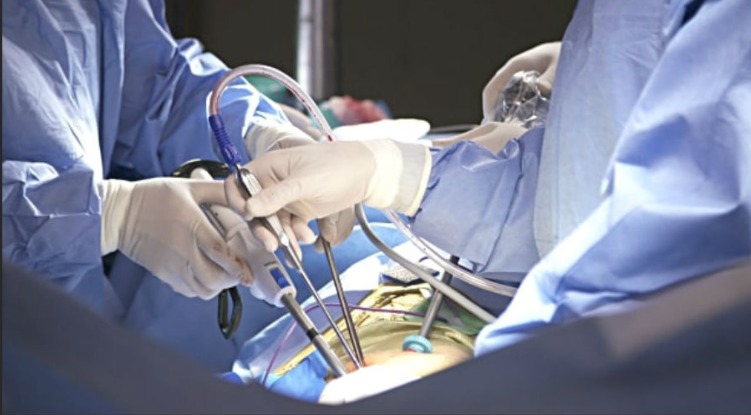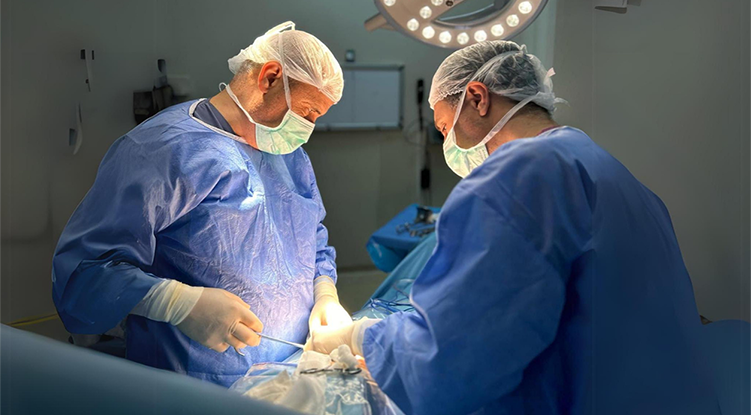The female reproductive system is a very complex and unique system. However, sometimes certain health issues may arise, and these issues may not be solved by treatments and therapies. In such cases, surgeries such as hysterectomy may be considered. The removal of the uterus, an important component of the female reproductive system, may even become necessary to resolve certain problems without uterine cancer.
Hysterectomy, also known as a uterine removal surgery, is a surgical procedure performed to remove a woman's uterus. There are many reasons why the uterus may need to be removed. The scope of the surgery may vary depending on the reason for the surgery, and the type of surgery may also differ.
Hysterectomy is often performed when the complete removal of the uterus is deemed necessary, but it is also possible to remove the fallopian tubes and ovaries if needed. After a hysterectomy, the person may no longer menstruate and will lose the ability to become pregnant. The reasons for a hysterectomy range from myomas to cancer diseases. Additionally, in cases where the cause cannot be found, the uterus may still be removed due to severe bleeding.
Around the world, the most common reason for uterine removal is fibroids. This is because fibroids cannot typically be treated with medication. Therefore, apart from operations where fibroids are removed while leaving the uterus intact, the removal of the uterus is also a way to eliminate fibroids.
Furthermore, in cases such as uterine cancer, ovarian cancer, or problems with the ovaries after the reproductive function has ceased (typically after the age of 45), surgery may involve the removal of the uterus as well.
The hysterectomy procedure is generally performed in the following conditions:
- Uterine cancer and cervical cancer,
- Ovarian cancer,
- Adenomyosis,
- Conditions caused by fibroids, such as back pain, constipation, inability to urinate, frequent urination, or urinary incontinence,
- Severe or intermenstrual bleeding,
- Uterine prolapse (where the uterus falls out of the vaginal canal).
How is Hysterectomy Performed?
When determining the scope of the hysterectomy, the focus is placed on the reason for the procedure and how much of the uterus and reproductive system can safely remain.
Abdominal hysterectomy, also known as total, simple, or abdominal total hysterectomy, involves making a horizontal incision along the bikini line to remove the entire uterus. This procedure usually leaves only a small scar. In some cases, especially when there is a large uterine fibroid (non-cancerous cyst), a vertical incision may be required in the lower abdomen. It may also be necessary if the fibroid is large or if cancer is present.
Another type of hysterectomy is laparoscopic hysterectomy, where a laparoscope (a type of telescope) is inserted through an incision in the belly button to visualize the pelvic organs.
The laparoscopic hysterectomy procedure involves making three or four small incisions in the abdominal area, through which other surgical instruments are inserted. The abdomen is inflated like a balloon with carbon dioxide gas, allowing for a clear view of all the organs. The surgical procedure is performed by observing the camera feed. During this process, the uterus (womb) is pushed out through the vagina, either with or without the ovaries and fallopian tubes.
The vaginal hysterectomy procedure is performed through an incision made in the upper part of the vagina. This procedure is typically used in cases of uterine prolapse, and the entire operation is performed vaginally without opening the abdomen.
Another type of surgery is subtotal or partial hysterectomy, which is performed when only a small amount of uterine tissue needs to be removed. During a partial hysterectomy, the surgeon removes the uterus but leaves the cervix in place.
The removal of the cervix is often recommended as it is considered a potential cancerous area, but some women may not agree to its removal due to its role in sexual function. In subtotal hysterectomy, if the cervix is left intact, regular screening tests will need to be continued.
Radical hysterectomy is a type of uterine removal surgery that involves the removal of the uterus, fallopian tubes, ovaries, the upper part of the vagina, associated pelvic ligaments, and lymph nodes. This procedure is usually preferred when there is cervical, ovarian, fallopian tube, or uterine cancer. After this surgery, you may need to stay in the hospital for 2 to 5 days.
After this surgery, you will no longer menstruate, and you will not be able to get pregnant again. However, your sexual desire typically remains unchanged, and you can return to your normal sexual life after recovery. There is an increased likelihood of entering menopause at an earlier age following this procedure.
If the surgery involves the removal of the ovaries, you will immediately enter menopause. As a result, you may experience typical symptoms such as hot flashes, decreased libido, vaginal dryness, mood swings, and insomnia. These symptoms naturally occur, and you may need to begin hormone replacement therapy to alleviate the characteristic symptoms of menopause. Your specialist doctor will provide the best guidance in such a situation.
In conclusion, hysterectomy is generally performed for women with serious pelvic issues such as advanced cervical or ovarian cancer, infections, fibroids, bleeding, severe endometriosis, or uterine prolapse. This surgical intervention is carried out when other clinical treatments have not been successful.
Recovery typically takes three to eight weeks, depending on the type of surgery, and during the first month after the surgery, heavy lifting should be avoided. Sexual intercourse should be avoided during the 4-6 week period following the hysterectomy. Sometimes, pelvic pain may occur after the surgery due to exertion, so it is advisable to refrain from strenuous activities. However, normal daily activities can generally be resumed comfortably.
For more detailed information and support requests regarding these procedures, please feel free to contact us via our clinic’s contact number.






